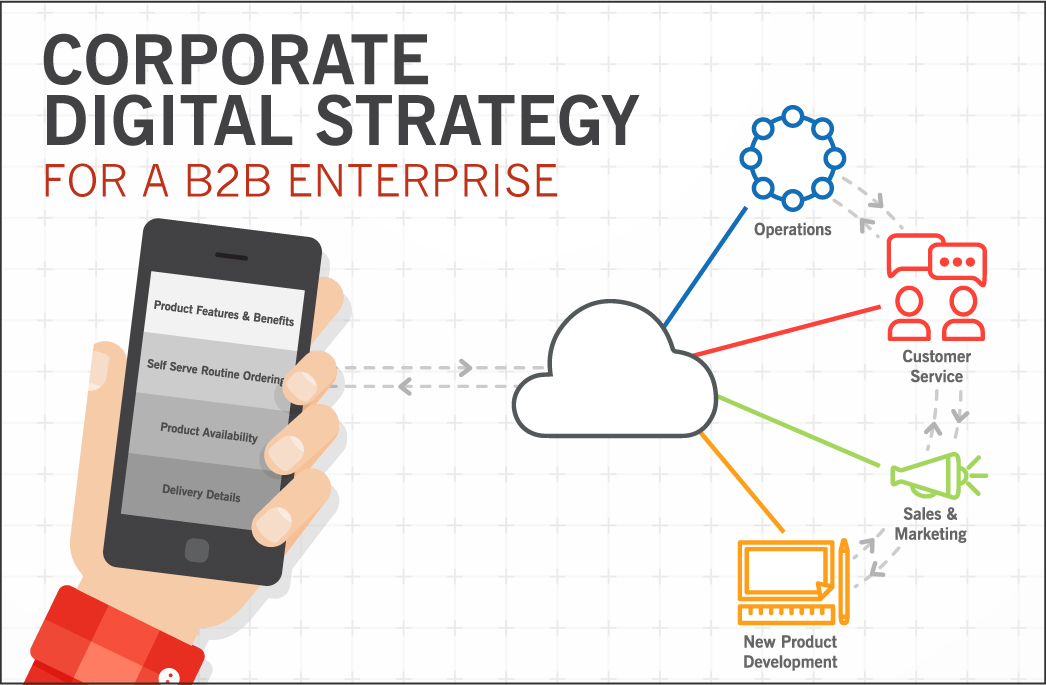How does a manufacturing organization deploy a corporate digital strategy without turning its business upside down? Where is the best place to start? How long will this take and what’s the price tag? How much revenue lift can I expect? At
Trellist, we are asked these questions on a frequent basis from our clients. The answer, as you probably expect, is “it depends.”

Let’s first define a corporate digital strategy as a means to establishing a unified, connected information system that enables an organization to access one version of the truth. This system encompasses content on your products and services, customer buying insights, product availability, manufacturing capability, and new product development information. Unfortunately, there is no blueprint that works for every organization as the complexity of operations, internal skills, and market conditions vary greatly. However, there are best practices and methodologies that can be followed to ensure you get value from your investment. This series of articles will explore how to organize—and stay on task—for future success with your digital strategy.
For large, enterprise organizations it makes sense to start with your biggest pain point. In other words, what part of the organization has the most opportunity to improve and impact your go-to-market efficiency? Let’s evaluate a manufacturing B2B enterprise through four distinct lenses: (1) Operations, (2) Customer Interface, (3) Business Processes, and (4) Data Access.
In this article, we will explore Operations. Most of our clients agree that a digital strategy for their manufacturing operations will be critical to maintain competitiveness. Their senior leadership is also aligned to this viewpoint. What is missing? A cohesive vision and an executable strategy. Let’s get started on where your opportunities might be so you can build up a set of actions that will underpin your vision and ultimately deliver value to your company.
At Trellist, we work across a wide variety of software platforms and are able to make recommendations based upon an evaluation of your current systems, future needs, economics, in-house capabilities, and support strategies. Here are some preliminary topics to explore:
- What platforms are you currently using across the organization?
- What is the existing level of connectivity and compatibility?
- Can your platforms provide you the insights your managers need to make decisions?
- What are your monthly, weekly, daily, and real-time data needs?
- Is the system easy to use? Does it require your employees to become “power users”?
- Does your manufacturing platform connect with marketing, sales, and new product launch platforms for seamless customer data integration?
- Are your platforms expandable and adaptable for future needs?
- Is there consistency among the data within your systems or are there multiple systems providing competing insights?
Having smooth connectivity across processes can reduce costs during production as well as enhance your position as a supplier. Your customer experience can be significantly impacted by on-time delivery of a high quality product. Moving to cost leadership quickly via automation can also deliver value in a competitive market. However, even more compelling would be to analyze a product’s entire life cycle for hard evidence of profitability at every stage. This is where the magic happens. Analyzing this data will provide insights into design cost, scale-up cost, time to market for a new product, comparisons between “as designed” to “as made,” and value in use vs. earlier product versions. These moves will drive you toward better asset utilization and market responsiveness, i.e. performance factors that far outweigh variable cost improvements.
If you believe Operations is the area where you can gain the most go-to-market efficiency, the first set of actions you take will depend upon your answers to the above questions. Our recommendation is to start with a self-funding pilot project and
then tackle a critical need to ensure the quick wins can maintain momentum. Our next article will explore how to digitalize the Customer Interface to deliver value.
Want to learn more? Read the rest of our Digital Strategy for Enterprise
B2B series covering topics, such as: (1) Operations, (2) Customer Interface, (3) Business Processes, and (4) Data Access.
If you have questions or would like to learn how Trellist can impact your business with a Digital Strategy, please contact Trellist Consulting.












